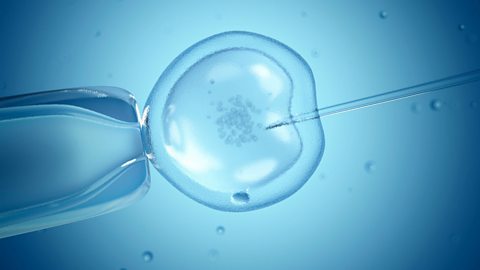The use of hormones to treat infertility - Higher
Fertility treatments
Some women have difficulty becoming pregnant because they don't ovulationThe process of releasing an egg from an ovary. or their eggs do not mature. Fertility drugs contain FSHFollicle Stimulating Hormone. It stimulates oestrogen production and the growth of follicles (egg-sacs) in the ovary. It is secreted by the pituitary gland. and LHLuteinising Hormone, secreted by the pituitary gland, which stimulates ovulation. to artificially alter the menstrual cycle and increase the chance of pregnancy. The FSH stimulates eggs to mature in the ovary and the LH encourages ovulation to occur. Through scientists applying their understanding of science to new treatments, fertility treatments have had a positive impact on many people's lives.
Fertility treatments increase a woman's chance of becoming pregnant, although the treatment may not always work. Also, because the treatment boosts the production of mature eggs, it increases the chance of twins or triplets. Multiple pregnancies carry a risk of complications, and may lead to premature or underweight babies. A couple who want to have fertility treatment should weigh up the risks and benefits of the treatment.
In vitro fertilisation (IVF) treatment
If a couple are having difficulty conceiving a child because there are issues with the quality of the man's sperm, or a woman has blocked oviductAlso called a Fallopian tube or egg tube, this tube leads from an ovary to the uterus., then in vitro fertilisation or IVFThe letters stand for 'in vitro fertilisation'. This involves bringing the sperm and the egg together to create an embryo, which is placed into the woman's womb to increase the chance of giving birth. can be used.
- IVF involves giving a mother FSH and LH to stimulate the maturation of several eggs.
- The eggs are collected from the mother and fertilised by sperm from the father in a dish in the laboratory (in vitro literally means 'in glass').
- The fertilised eggs develop into embryoAn organism in the early stages of development..
- At the stage when they are tiny balls of cells, one or two embryos are inserted into the mother's uterusAlso known as a womb. This is where the fertilised egg (ovum) develops..
The development of microscopy techniques has allowed IVF treatments to be developed further.

In some cases, the sperm have difficulty moving so cannot fertilise the egg. Scientists can now directly inject the egg with a sperm cell. They use a powerful light microscope to carry out this technique.